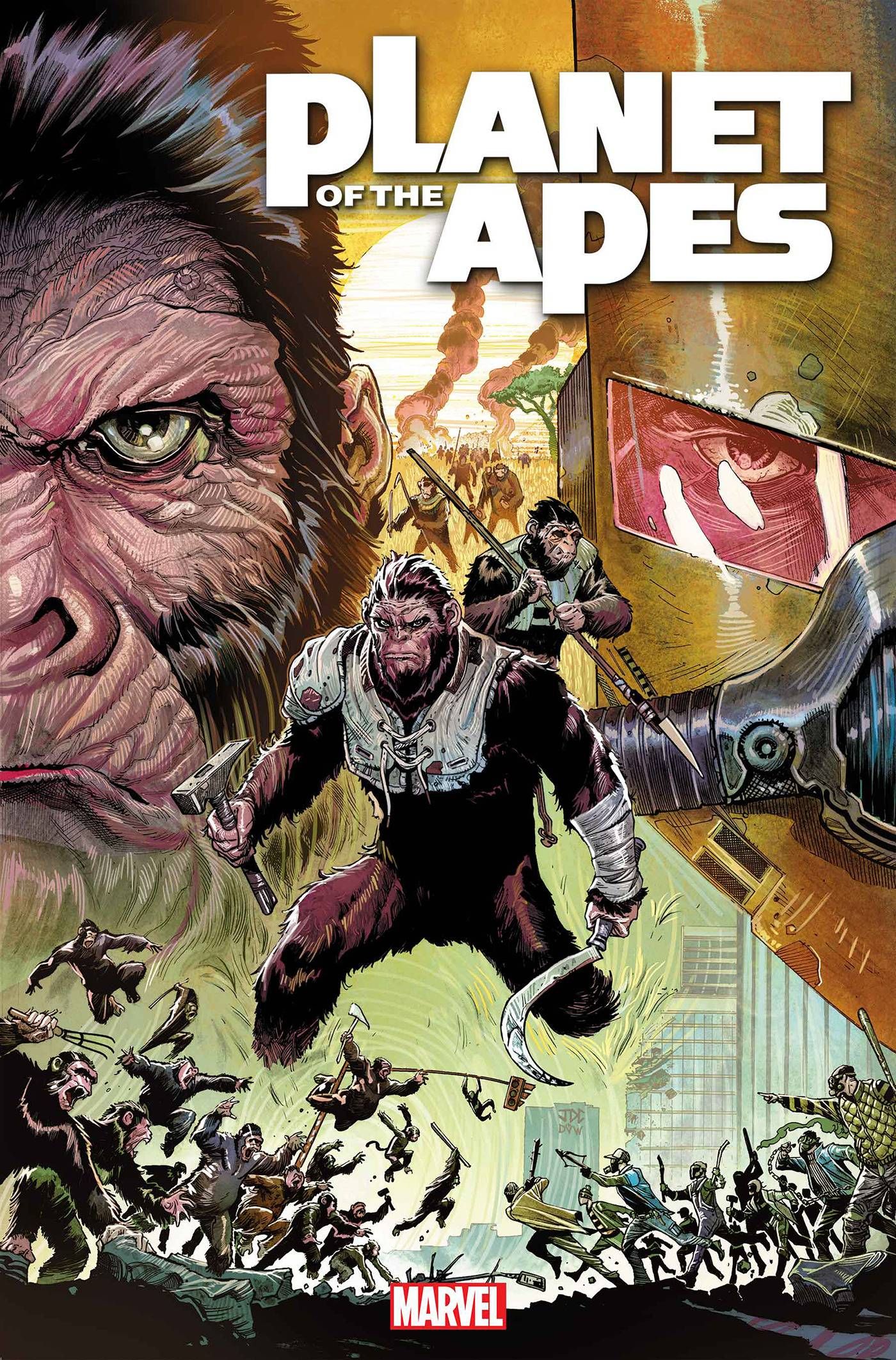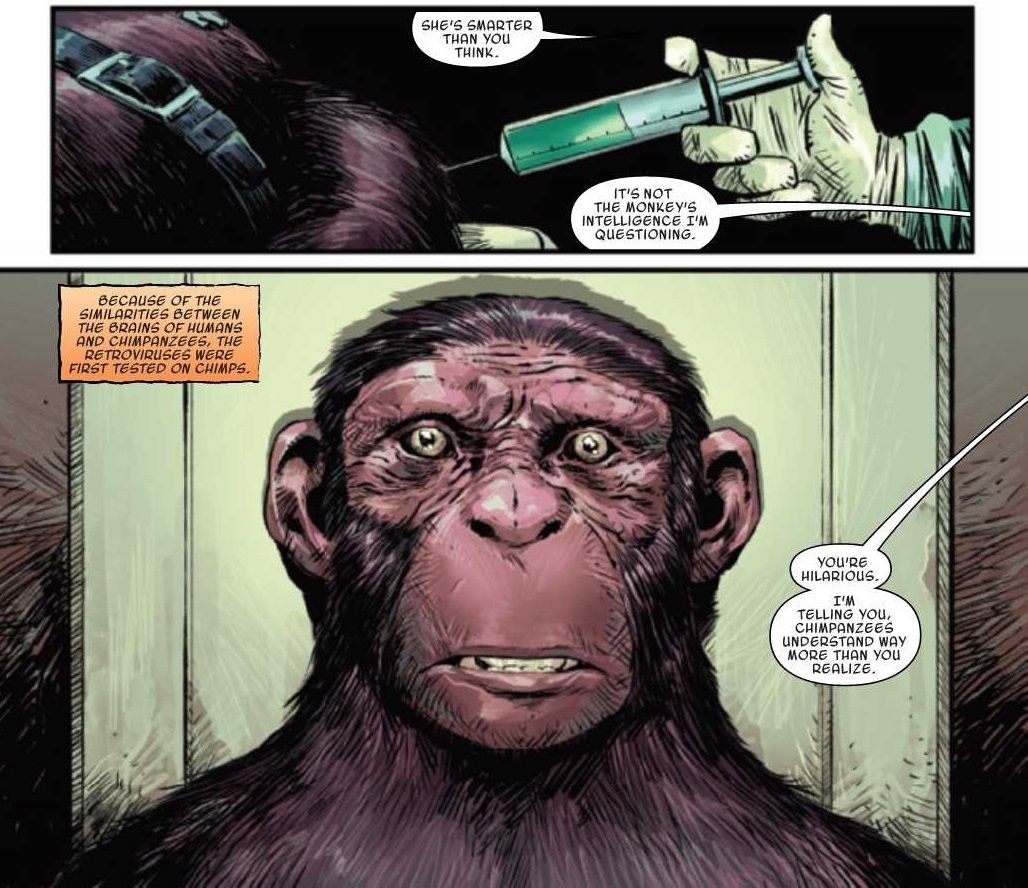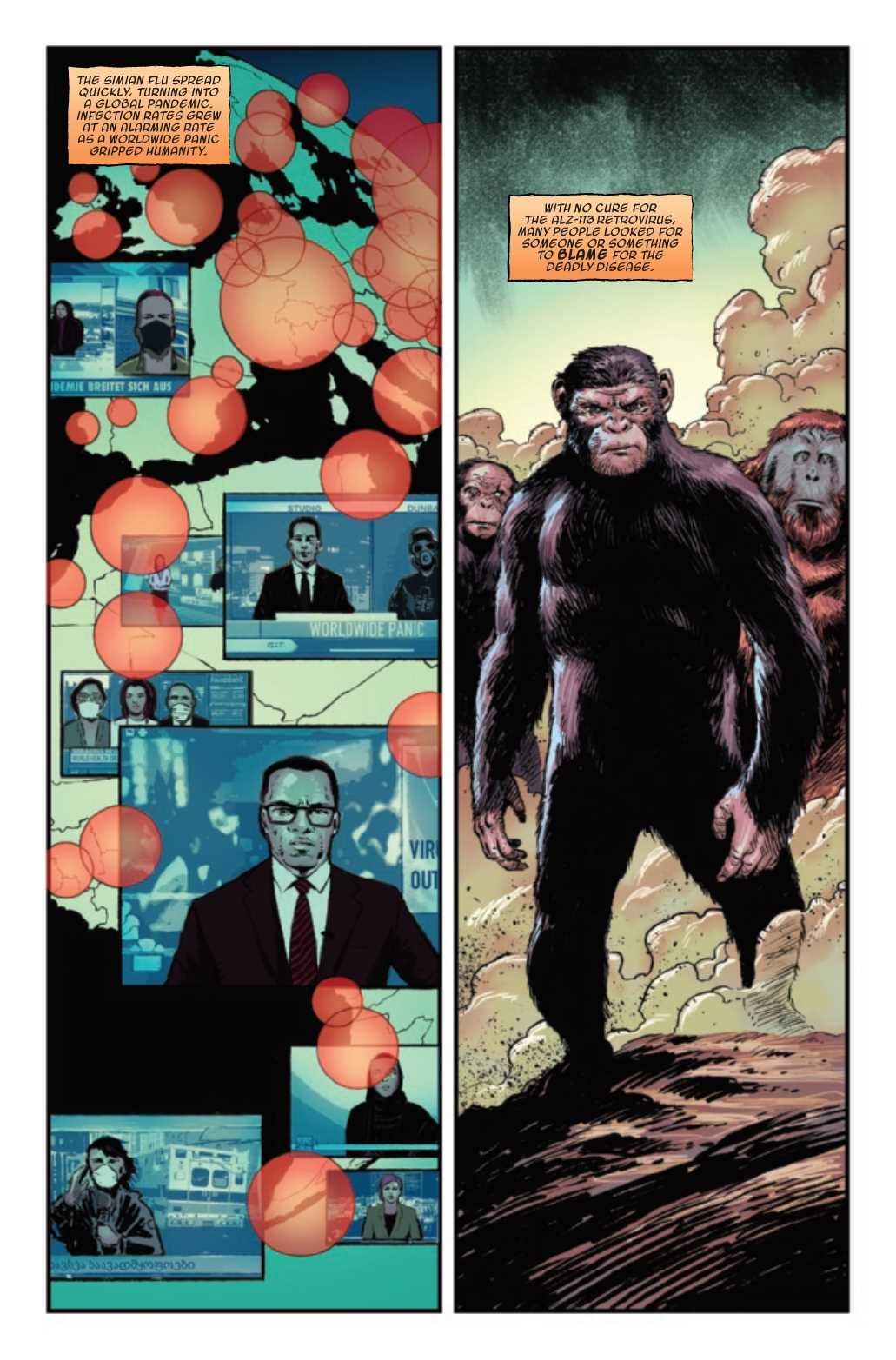There's no time to monkey around because the apes are back in town, thanks to Marvel's new comic imprint 20th Century Studios. Written by David F. Walker, drawn by Dave Wachter, colored by Bryan Valenza, and lettered by VC's Joe Caramagna, Planet of the Apes #1 takes the reader back to the events of the recent trilogy and provides more context about the relationship between ape and man. Expectedly, it isn't a case of everyone learning to get along.
The issue provides a thorough recap of what has transpired in the past. The ALZ-113 virus has gotten out of control and has swept over the world. Humans are perishing, while the apes rise. However, there are radicals who believe apes are the cause for this mess, and are targeting them for extinction. In spite of all the chaos, there are others, such as Peacekeeper Juliana Tobon, who know the apes are innocent in this human-induced mess and will stand up to protect them.
While it's understandable that a first issue needs to provide the lay of the land and overall context of the title, Planet of the Apes #1 comes across as more of a recap of the movies than an actual new story within the universe. In fact, many of these events could be covered in a summary page or the series' solicitations. Even though the main character Juliana is introduced and her motivation for helping the apes throughout the ALZ-113 crisis is touched upon, there's no hook to encourage the reader to find out more about her. It's possible that her arc could be compelling and riveting in future issues, but it remains to be seen.
What Walker's story does well, though, is how it addresses the ALZ-113 outbreak and humanity's differing perspective toward it. Much like the recent real-life pandemic demonstrated, some people refuse to believe in science but trust in conspiracy theories. It's fascinating -- and frustrating, to an extent -- to see how people will fight to justify their beliefs even when confronted with empirical evidence. There's something important to be discussed here, and if Planet of the Apes continues to lean into this aspect of the story, it will be stronger for it.
Wachter nails a similar aesthetic to Rise of the Planet of the Apes, which also had a confined and restricted atmosphere. While there are sections where the artist gets to showcase expansive art and the apes out in the open, the story starts with a caged tone that's symbolic of the apes' experiences in captivity. Valenza follows suit with a color palette akin to Rupert Wyatt's film. Anyone who has watched the Apes trilogy will instantly notice the difference between Wyatt and Matt Reeves' efforts, and the colorist leans toward the former's vision for the series. In terms of lettering, Caramagna doesn't have too many action scenes to shine; however, the letterer successfully demonstrates the difference between the characters speaking and signing.
Overall, Planet of the Apes #1 feels flat for the debut of a new series. It spends too much time explaining to the audience what happened before rather than trusting the reader to catch up in an organic and fluid way. That being said, there are still glimmers of hope that the title could offer something new and explore important ideas in future installments.



